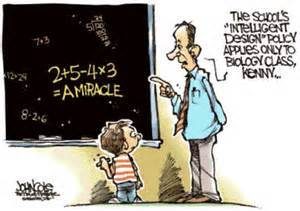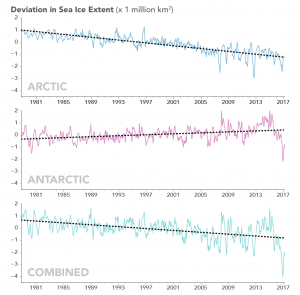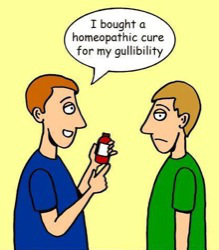Sep
29
2017
 Celiac disease is a serious disorder that affects about 1% of the population worldwide. The disease results from an immune reaction to gliadin, which is part of the gluten protein found in wheat, rye, and barely. Glutens are stretchy proteins that give breads their sponginess and allow breads to rise.
Celiac disease is a serious disorder that affects about 1% of the population worldwide. The disease results from an immune reaction to gliadin, which is part of the gluten protein found in wheat, rye, and barely. Glutens are stretchy proteins that give breads their sponginess and allow breads to rise.
Those with celiac disease make antibodies to gliadin, which causes inflammation of the lining of the small intestine and a number of painful and harmful symptoms. It can now be accurately diagnosed with blood tests for the anti-gliadin antibodies, but the only treatment is a life-long diet free of any gluten.
Gluten has also caught the attention of the clean-eating food fad crowd, who have convinced many people they have non-celiac gluten sensitivity. As I discussed previously, this entity is controversial at best and probably doesn’t exist. However, it is always important to point out that many people who end up falling into an ultimately false diagnosis may have a different real disease. Some people who now get labeled as gluten sensitive may actually have wheat allergies. There are other possible culprits as well, such as FODMAPs (fermentable, oligo-, di-, monosaccharides, and polyols).
Regardless, life for those with celiac disease can be challenging. The diet is rigorous, and even the smallest amount of gluten can trigger a reaction in those truly sensitive. Continue Reading »
Sep
28
2017
 Belle Gibson is an Australian wellness blogger who made a lot of money selling her cookbooks and apps for healthy eating. What elevated her profile above the sea of competitors, however, was her claim to have cured herself of brain cancer with her diet. The problem with her story, however, is that she never had brain cancer.
Belle Gibson is an Australian wellness blogger who made a lot of money selling her cookbooks and apps for healthy eating. What elevated her profile above the sea of competitors, however, was her claim to have cured herself of brain cancer with her diet. The problem with her story, however, is that she never had brain cancer.
Now an Australian court has fined Gibson $410,000 for fraud.
Gibson doesn’t really tell a coherent story, and it is full of red flags, but here is what she says. She claims she was diagnosed with terminal brain cancer by a German alternative medicine practitioner. She believed the diagnosis, and was just “living her truth.” Therefore, she says, she never lied to her followers, she was lied to herself.
But her story of being a victim does not really hold together. In 2011 she was given a brain scan which found her to be perfectly healthy. So she knew at that time that she never had brain cancer. However, two years later she launched her wellness app in which she claimed her diet cured her of brain cancer. She also claims that she was about to come clean with her readers, but the media got to her first. Right.
Her claim of being a victim also doesn’t explain why the money that was apparently donated to charity via sales of her app never made it to the charity.
Those are a pretty damning set of facts, and her explanations don’t really cover them. I guess the Australian court agreed.
Continue Reading »
Sep
26
2017
 The link to the article from the BBC Science News page reads, “Therapy “Wakes” Vegetative-State Patient.” The headline of the article was a bit more conservative, “Vegetative-state patient responds to therapy.” Annoying click-bait aside, what is actually going on here?
The link to the article from the BBC Science News page reads, “Therapy “Wakes” Vegetative-State Patient.” The headline of the article was a bit more conservative, “Vegetative-state patient responds to therapy.” Annoying click-bait aside, what is actually going on here?
Like every such case so far, the improvement in neurological function in this patient with severe coma is extremely limited. This is mostly a proof of concept study, and the results are interesting, but the term “wakes,” even is quotations, is not even close to being justified.
Here is the case report: Restoring consciousness with vagus nerve stimulation. Even that title is a bit misleading – they aren’t saying they actually restored consciousness, just that vagus nerve stimulation might be a viable approach to develop. For background, a vegetative state is one in which basic neurological functions, like breathing, having a sleep-wake cycle, and some automatic movements, are retained. However, the conscious part of the cortex does not appear to be working. By definition there is no reaction to the environment.
By contrast a minimally conscious state has, as the name implies, minimal response to the environment. Patients in this state might blink to threat, or turn to a voice, but cannot communicate or participate in their daily activities. There is a continuum of neurological function from this minimal state to fully conscious.
As I have discussed before, researchers are trying to improve out ability to tell how impaired individual people are who clinically appear to be vegetative or minimally conscious. The challenge is that the neurological exam is limited. If the patient cannot follow commands, we have a limited ability to directly test which circuits in the brain are functioning. The patient may be more conscious than they appear to be because they are paralyzed or deaf, for example. Using functional MRI scanning and EEGs have enhanced our ability to assess brain function in these cases. Continue Reading »
Sep
25
2017
 Robert F. Kennedy Jr. talks with reporters in the lobby of Trump Tower in New York, Tuesday, Jan. 10, 2017, after meeting with President-elect Donald Trump. (AP Photo/Evan Vucci)[/caption]
Robert F. Kennedy Jr. talks with reporters in the lobby of Trump Tower in New York, Tuesday, Jan. 10, 2017, after meeting with President-elect Donald Trump. (AP Photo/Evan Vucci)[/caption]
Robert F. Kennedy Jr. considers himself an environmentalist. While advocating for the environment, he has become particularly concerned about the effects of mercury on human health. This in itself is reasonable, and there is broad scientific agreement that we should make efforts to minimize human exposure to mercury.
But Kennedy goes beyond reasonable recommendations based upon scientific consensus. He has become part of what we call, “The Mercury Militia” who have become unmoored from reality in their zeal to combat the perceived evils of mercury. The mercury militia further became tied to the anti-vaccine movement when it was claimed that the mercury in some vaccines was causing harm (it doesn’t). He has become a visible example of how someone can cocoon themselves in their own reality.
In a recent interview for Stat News Kennedy tells a number of falsehoods about vaccines. In essence he is lying, although it is possible he believes the lies he tells. Kennedy has apparently dedicated a large portion of his life to this issue, publicly advocates for his position, and certainly has resources at his disposal. And yet he gets basic facts about vaccines hopelessly wrong. How does that happen?
Paul Offit has written an excellent take down of Kennedy’s interview, explaining many of his falsehoods. For example, in the interview Kennedy claims: Continue Reading »
Sep
22
2017
 One thing I really like about sports is that it is the ultimate meritocracy. You are judged on your skills, talents, and ultimately your performance. Professional players are evaluated by the numbers, and traded accordingly. Their salaries are a direct reflection of their value to their team.
One thing I really like about sports is that it is the ultimate meritocracy. You are judged on your skills, talents, and ultimately your performance. Professional players are evaluated by the numbers, and traded accordingly. Their salaries are a direct reflection of their value to their team.
All this has even been reduced to a science, sabermetrics, which is praised for its cold calculating approach to exactly how much each player is worth to their team. I never hear complaints about this in professional sports. I only hear comments about how one’s favorite team is doing, and the performance of various players. You can even play “fantasy football” or other sports where you get to pick your own players based on their statistics.
This approach to professional sports is the ultimate in elitism. They even refer shamelessly to “elite players” without anyone batting an eye. There is no serious criticism of the NFL for unfairly discriminating against smaller players, or for the undemocratic way in which players are recruited. The hard work that leads to elite performance is also recognized and praised.
The same is true in other spheres of life as well, such as celebrity. I will not praise celebrity culture, but it is a simple fact that celebrities are generally judged on talent, skills, performance, and persona. Critics and fans are ruthless. This is true of actors, artists, and musicians. In Hollywood, elitism is institutionalized. There are arcane rules and negotiations about the order in which credits appear on the screen, based on the perceived elite status of the actor.
Continue Reading »
Sep
21
2017
 No matter what happens, it’s part of the conspiracy, at least in the perspective of the conspiracy theorist.
No matter what happens, it’s part of the conspiracy, at least in the perspective of the conspiracy theorist.
But let’s back up a bit. We talking about scientists trying to understand climate change, and specifically the effects of released carbon into the atmosphere. There are a few layers to this question, which is predictably complex.
The first layer is quite basic – sunlight heats up the earth, which radiates some of that heat back out into space as infrared radiation. Carbon dioxide in the atmosphere reflects some of these infrared photons back down to the Earth, trapping some of that heat. This is commonly known as the greenhouse effect, and hence CO2 as a greenhouse gas. The more CO2 there is in the atmosphere the greater this effect, and the warmer the planet.
The far trickier part, however, is to predict exactly how much warming will occur in response to a certain increase in CO2 in the atmosphere. To answer this question climatologists develop complex climate models, which have to consider all the natural variables that affect climate. They then compare the predictions of these models to what has happened and what does happen, and then tweak them. Continue Reading »
Sep
19
2017
 Part of the reason I like science fiction is because it can be a thought-experiment about future technology and society. For this reason, like any self-respecting nerd, I often pay close attention to the details of how future technology is portrayed. Stepping out of the movie-as-entertainment and storytelling for minute, and focusing on the ideas that went into crafting a vision of technology advanced beyond our current tech – how did they do? What assumptions did the creators make, and did they break any laws of physics.
Part of the reason I like science fiction is because it can be a thought-experiment about future technology and society. For this reason, like any self-respecting nerd, I often pay close attention to the details of how future technology is portrayed. Stepping out of the movie-as-entertainment and storytelling for minute, and focusing on the ideas that went into crafting a vision of technology advanced beyond our current tech – how did they do? What assumptions did the creators make, and did they break any laws of physics.
I tend to be most fascinated by what hidden assumptions and biases go into visions of the future. I wrote about this previously with respect to spaceship design. The same idea applies to how robots are portrayed in science fiction.
For example, perhaps my biggest peeve is Star Wars (probably because it is a beloved franchise). I don’t necessarily mind the design of droids, because you can argue that they are intended to look unmistakably mechanical. However, we get a few glimpses of artificial robotic limbs – Luke’s hand and Vader’s arm, for example. These appear to be entirely constructed of wires and pulleys. Vader’s arm is the worst – the stump is nothing but a mass of wires.
This image of artificial robotic parts is almost ubiquitous in science fiction, although recently there are some great examples of moving past this cliche. Just compare the original West World, where robot faces look convincingly human, until they are removed and revealed to be rigid metal with wires underneath. The recent series West World, however, portrays soft 3D printed robotic technology. That’s what I’m talking about. Continue Reading »
Sep
18
2017
 The extent of Arctic sea ice is an important marker for global climate change. In the last forty years it also has been unequivocally shrinking. NASA has been tracking Arctic sea ice extent at different times of the year, with the September minimum being an important point of comparison. Like any chaotic system there are going to be short term fluctuations, but the long term trend is crystal clear. Look at the graph and look at the video on the NASA site linked above – the shrinking is clear.
The extent of Arctic sea ice is an important marker for global climate change. In the last forty years it also has been unequivocally shrinking. NASA has been tracking Arctic sea ice extent at different times of the year, with the September minimum being an important point of comparison. Like any chaotic system there are going to be short term fluctuations, but the long term trend is crystal clear. Look at the graph and look at the video on the NASA site linked above – the shrinking is clear.
The first estimates for September 2017 are in and they are consistent with the overall trend. Arctic sea ice’s most recent maximum for the September minimum was in 1996 at 7.87 million square km. The minimum minimum was in 2012 at 3.62 million sq km – less than half. This year the minimum is estimated to be 4.7 million sq km, slightly more than 2016. All of the last 10 years are below the average for the previous 30 years.
This past year we had a warm winter, which led to the lowest amount of March Arctic sea ice on record, but a cool summer allowed the Arctic ice to rebound a bit.
All of this adds to the strong scientific consensus that the globe is warming and this trend is largely due to human factors (not natural cycles). But as you probably know, there is a well-financed campaign of denial, ideologically and financially motivated, to muddy the waters and create doubt and confusion about this scientific consensus. This is easy to do with complex scientific questions.
Continue Reading »
Sep
15
2017
 The Cassini probe to Saturn has been considered one of the most successful space missions in history. Today it will plunge into the upper atmosphere of Saturn. As the atmosphere gets thicker on its way down the probe will begin to tumble from the turbulence, until it is ripped apart by the violent forces and finally melts in the intense heat of the gas giant. (As I am writing this there are just 30 minutes left.)
The Cassini probe to Saturn has been considered one of the most successful space missions in history. Today it will plunge into the upper atmosphere of Saturn. As the atmosphere gets thicker on its way down the probe will begin to tumble from the turbulence, until it is ripped apart by the violent forces and finally melts in the intense heat of the gas giant. (As I am writing this there are just 30 minutes left.)
This is the intended fate of the probe. It was launched in 1997, took seven years to get to Saturn, and has been studying the planet and its moons for 13 years. It has dramatically improved our knowledge of the Saturn system. Cassini was the first probe to orbit Saturn. Prior to that, Pioneer and Voyager had performed flybys, which gave us quick glimpses but did not allow for extended study.
In addition to being a feat of science and engineering, Cassini surpassed expectations. Its original mission profile was for four years. It was able to have two mission extensions, for a total of 13 years. Now it is almost completely out of fuel – its mission is over.
Continue Reading »
Sep
14
2017
 As I continue my efforts to fight against pseudoscience in medicine, I often ask myself – how bad can it theoretically get? I have had this discussion with others as well, some of whom argue that we should not worry because science will win out in the long run. Science is self-corrective, and pseudoscience will become marginalized over time. I hope this optimistic view is correct, but I am not reassured by the evidence.
As I continue my efforts to fight against pseudoscience in medicine, I often ask myself – how bad can it theoretically get? I have had this discussion with others as well, some of whom argue that we should not worry because science will win out in the long run. Science is self-corrective, and pseudoscience will become marginalized over time. I hope this optimistic view is correct, but I am not reassured by the evidence.
Let’s consider a recent article in the Hindustan Times, written completely without skepticism or irony, which details how the government of India has opened a state-of-the art laboratory to study homeopathy.
Howrah-based Centre of Excellence in Fundamental Research in Homoeopathy will also undertake fundamental research studies in homoeopathy with an interdisciplinary approach.
“This institute has undertaken several clinical research studies such as autism, psoriasis, vitiligo, breast cancer, hypertension, migraine etc. along with proving of new drugs in homoeopathy with their clinical validations,” said Naik.
The lab will support PhD students in homeopathy and focus on research into viral and other infectious diseases. This is all part of the Ministry of Ayurveda, Yoga and Naturopathy, Unani, Siddha and Homoeopathy (AYUSH). In India, pseudoscience in medicine, including homeopathy, have been fully institutionalized and are explicitly endorsed by the government.
This is how bad it can get.
Continue Reading »
 Celiac disease is a serious disorder that affects about 1% of the population worldwide. The disease results from an immune reaction to gliadin, which is part of the gluten protein found in wheat, rye, and barely. Glutens are stretchy proteins that give breads their sponginess and allow breads to rise.
Celiac disease is a serious disorder that affects about 1% of the population worldwide. The disease results from an immune reaction to gliadin, which is part of the gluten protein found in wheat, rye, and barely. Glutens are stretchy proteins that give breads their sponginess and allow breads to rise.
 Belle Gibson is an Australian wellness blogger who made a lot of money selling her cookbooks and apps for healthy eating. What elevated her profile above the sea of competitors, however, was her claim to have cured herself of brain cancer with her diet. The problem with her story, however, is that she never had brain cancer.
Belle Gibson is an Australian wellness blogger who made a lot of money selling her cookbooks and apps for healthy eating. What elevated her profile above the sea of competitors, however, was her claim to have cured herself of brain cancer with her diet. The problem with her story, however, is that she never had brain cancer. The link to the article from the BBC Science News page reads, “Therapy “Wakes” Vegetative-State Patient.” The headline of the article was a bit more conservative, “Vegetative-state patient responds to therapy.” Annoying click-bait aside, what is actually going on here?
The link to the article from the BBC Science News page reads, “Therapy “Wakes” Vegetative-State Patient.” The headline of the article was a bit more conservative, “Vegetative-state patient responds to therapy.” Annoying click-bait aside, what is actually going on here? Robert F. Kennedy Jr. talks with reporters in the lobby of Trump Tower in New York, Tuesday, Jan. 10, 2017, after meeting with President-elect Donald Trump. (AP Photo/Evan Vucci)[/caption]
Robert F. Kennedy Jr. talks with reporters in the lobby of Trump Tower in New York, Tuesday, Jan. 10, 2017, after meeting with President-elect Donald Trump. (AP Photo/Evan Vucci)[/caption] One thing I really like about sports is that it is the ultimate meritocracy. You are judged on your skills, talents, and ultimately your performance. Professional players are evaluated by the numbers, and traded accordingly. Their salaries are a direct reflection of their value to their team.
One thing I really like about sports is that it is the ultimate meritocracy. You are judged on your skills, talents, and ultimately your performance. Professional players are evaluated by the numbers, and traded accordingly. Their salaries are a direct reflection of their value to their team. No matter what happens, it’s part of the conspiracy, at least in the perspective of the conspiracy theorist.
No matter what happens, it’s part of the conspiracy, at least in the perspective of the conspiracy theorist. Part of the reason I like science fiction is because it can be a thought-experiment about future technology and society. For this reason, like any self-respecting nerd, I often pay close attention to the details of how future technology is portrayed. Stepping out of the movie-as-entertainment and storytelling for minute, and focusing on the ideas that went into crafting a vision of technology advanced beyond our current tech – how did they do? What assumptions did the creators make, and did they break any laws of physics.
Part of the reason I like science fiction is because it can be a thought-experiment about future technology and society. For this reason, like any self-respecting nerd, I often pay close attention to the details of how future technology is portrayed. Stepping out of the movie-as-entertainment and storytelling for minute, and focusing on the ideas that went into crafting a vision of technology advanced beyond our current tech – how did they do? What assumptions did the creators make, and did they break any laws of physics. The extent of Arctic sea ice is an important marker for global climate change. In the last forty years it also has been
The extent of Arctic sea ice is an important marker for global climate change. In the last forty years it also has been  The Cassini probe to Saturn has been considered one of the most successful space missions in history.
The Cassini probe to Saturn has been considered one of the most successful space missions in history.  As I continue my efforts to fight against pseudoscience in medicine, I often ask myself – how bad can it theoretically get? I have had this discussion with others as well, some of whom argue that we should not worry because science will win out in the long run. Science is self-corrective, and pseudoscience will become marginalized over time. I hope this optimistic view is correct, but I am not reassured by the evidence.
As I continue my efforts to fight against pseudoscience in medicine, I often ask myself – how bad can it theoretically get? I have had this discussion with others as well, some of whom argue that we should not worry because science will win out in the long run. Science is self-corrective, and pseudoscience will become marginalized over time. I hope this optimistic view is correct, but I am not reassured by the evidence.




